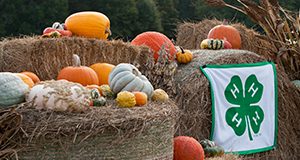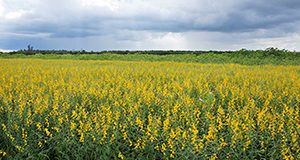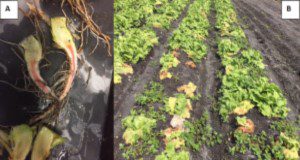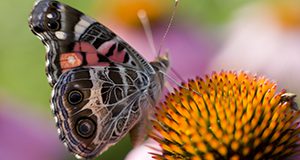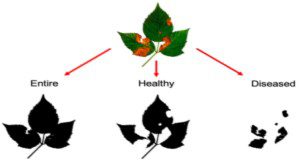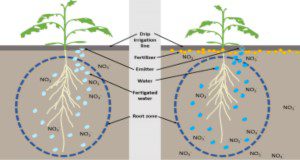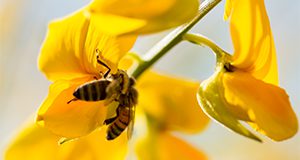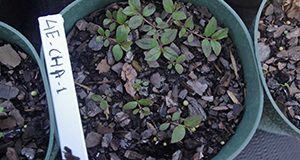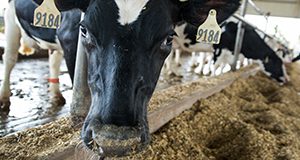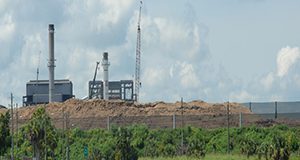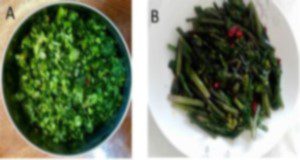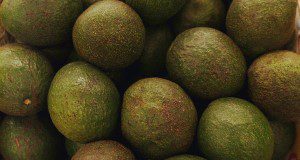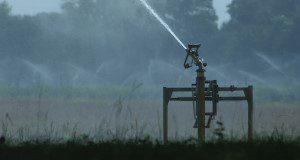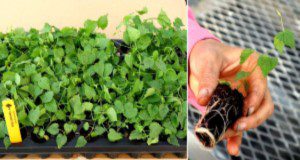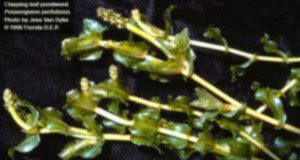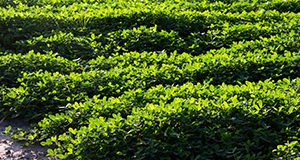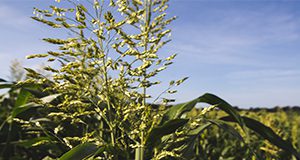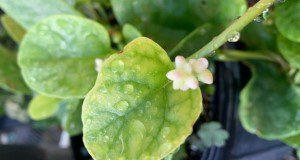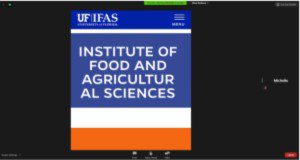This 8-page document introduces the core requirements and organizational considerations for replicating a cooperative animal unit. Written by Alyssa Schortinghouse, and published by the UF/IFAS 4-H Youth Development Department, August 2020.
https://edis.ifas.ufl.edu/4h409
Category: Agriculture
Questions and Answers for Using Sunn Hemp (Crotalaria juncea L.) as a Green Manure Cover Crop
This 4-page document synthesizes information about the warm-season cover crop, sunn hemp. It addresses frequently asked questions for growers and summarizes the expanding body of sunn hemp research. The information is provided so growers in Florida can learn about up-to-date cultivation and management options as well as better understand sunn hemp’s practical uses. Written by Thioro Fall, Ariel Freidenreich, Stacy Swartz, Christopher Vincent, Yuncong Li, and Zachary Brym, and published by the UF/IFAS Agronomy Department, July 2020.
https://edis.ifas.ufl.edu/ag443
Fusarium Wilt: A New Threat to Florida Lettuce Production
Fusarium wilt of lettuce is a disease caused by the fungus Fusarium oxysporum f.sp. lactucae. The disease is present in all lettuce production areas worldwide. Recently this disease has been identified in Florida in localized fields. This new 4-page publication of the UF/IFAS Horticultural Sciences Department presents information about the disease, symptoms, and control measures useful to lettuce growers in Florida. Following these recommendations may help to avoid the spread of this fungus in muck soils at the Everglades Agricultural Area (EAA), where 90% of the lettuce in Florida is planted. Written by Germán V. Sandoya, Jesse J. Murray, Richard N. Raid, and Christian F. Miller.
https://edis.ifas.ufl.edu/hs1385
Are consumers knowledgeable about neonicotinoid insecticides and pollinator-friendly plants?
What does the general public know about neonicotinoids used in ornamental horticulture and their effects on pollinators? The question is an important one given that home landscapes serve as pollinator habitat and can impact pollinator health. This 5-page fact sheet written by Hayk Khachatryan, Xuan Wei, and Alicia Rihn and published by the UF/IFAS Food and Resource Economics Department summarizes a survey addressing consumer knowledge about neonicotinoids and pollinator plants, as well as their interest in enhancing pollinator health. The survey is part of a larger research project aimed at incorporating pollinator conservation into the ornamental horticulture industry's sustainability initiatives.
https://edis.ifas.ufl.edu/fe1081
How to Measure Leaf Disease Damage Using Image Analysis in ImageJ
This new 13-page article introduces simple image processing and analysis techniques to quantify leaf disease damage using ImageJ, an open-source image processing program. These techniques are not meant to replace crop scouting or disease diagnosis by a plant diagnostic laboratory, but rather to provide a supplemental tool for making quantitative measurements of leaf disease damage. Similar techniques are also available for plant growth assessment, including plant height, plant width, and canopy cover area. The image processing and analysis techniques introduced in this article are fairly simple to use and thus can be adopted not only by researchers, but also by producers, crop consultants, Extension agents, and students. Written by Lillian Pride, Gary Vallad, and Shinsuke Agehara, and published by the UF/IFAS Horticultural Sciences Department.
https://edis.ifas.ufl.edu/hs1382
Implementing the Five Rs of Nutrient Stewardship for Fertigation in Florida’s Vegetable Production
The five Rs of nutrient stewardship is a mnemonic device used to emphasize accuracy and precision for nutrient management so as to apply the (1) right source of fertilizer at the (2) right rate at the (3) right time in the (4) right place with the (5) right irrigation. Because the majority of Florida’s soils are sandy, this fifth R is imperative for sustainable nutrient management for commercial crop production. These main points of nutrient management (source, rate, time, place, irrigation) may help enhance sustainability by reducing pollution by eutrophication, nitrogen loss through ammonia volatilization, and climate change from soil greenhouse gas emission. This new 8-page publication of the UF/IFAS Horticultural Sciences Department was written by Mary Dixon and Guodong Liu.
https://edis.ifas.ufl.edu/hs1386
Consumer and Producer Perceptions and Preferences for Pollinator Friendly Labeling Practices in the US Green Industry
Increasing consumer interest in sustainable products and in protecting bees and other pollinator insects may be reducing demand for plants grown using neonicotinoids. This 5-page fact sheet written by Hayk Khachatryan, Xuan Wei, and Alicia Rihn and published by the UF/IFAS Food and Resource Economics Department summarizes consumer and producer perceptions about neonicotinoid-related regulations and labeling practices and identifies discrepancies between consumer and producer preferences for different pollinator friendly labeling phrases.
https://edis.ifas.ufl.edu/fe1083
Biology and Management of Garden Spurge (Euphorbia hirta) in Ornamental Crop Production
Garden spurge is a prostrate, herbaceous, short-lived, warm-season annual weed commonly found in Florida landscapes, container nurseries, and other agricultural production areas. This 5-page article is written to aid green industry professionals and others in the identification and management of garden spurge in and around ornamental plants. Written by Thomas Smith, Chris Marble, Shawn Steed, and Nathan Boyd, and published by the UF/IFAS Environmental Horticulture Department, July 2020.
https://edis.ifas.ufl.edu/ep586
Advantages and Disadvantages of Various Dry-off Methods for Dairy Cows
This 6-page document reviews advantages, disadvantages, and cost of four dry-off methods and gives recommendations for practical dry-off management. Written by Pornpamol Pattamanont, Marcos Marcondes, and Albert De Vries, and published by the UF/IFAS Department of Animal Sciences, June 2020.
https://edis.ifas.ufl.edu/an360
Bagasse: A Potential Organic Soil Amendment Used in Sugarcane Production
Bagasse is an agricultural by-product derived from the sugarcane milling process. It is a dry and fibrous residue left after the extraction of sugar juice from sugarcane. This 5-page document is a preliminary investigation into the possible effects of using bagasse as a soil amendment. Written by Jehangir H. Bhadha, Nan Xu, Raju Khatiwada, Stewart Swanson, and Chris LaBorde, and published by the UF/IFAS Department of Soil and Water Sciences, August 2020.
https://edis.ifas.ufl.edu/ss690
Production Guide for Choy Sum: An Emerging Asian Vegetable in Florida
Choy sum, also known as Chinese flowering cabbage, is a leafy vegetable that has been widely cultivated in southern China for more than 1,000 years, and is currently cultivated and consumed by a growing population in the western world. This new 5-page publication of the UF/IFAS Horticultural Sciences Department, written by Yanlin Wang and Guodong Liu, provides a brief overview of choy sum and its cultivation, as well as some suggestions for how to include it in a meal.
https://edis.ifas.ufl.edu/hs1380
Recomendaciones para el Control y Mitigación de la Marchitez del Laurel y sus Vectores, los Escarabajos Ambrosia, en Arboledas Comerciales de Aguacate en Florida
This is the Spanish translation of Recommendations for Control and Mitigation of Laurel Wilt and Ambrosia Beetle Vectors in Commercial Avocado Groves in Florida (HS1360). Laurel wilt and the ambrosia beetle vectors that transmit this lethal disease have and will continue to affect avocado production in Florida. At least 50% of the commercial producers are Hispanic Americans and some are more comfortable with publications in Spanish. The translator, Rubén Regalado, and reviewer, Carlos Balerdi, are both previous employees of UF/IFAS.
https://edis.ifas.ufl.edu/hs1379
Irrigation System Descriptions for Tropical and Subtropical Fruit Crops in Florida
Florida’s tropical and subtropical fruit crop industries use various irrigation systems, including high-volume systems designed for irrigation and freeze protection, drip systems for herbaceous fruit crops (papaya, banana), and microsprinkler types, mainly for irrigation and fertigation. There continues to be a steady stream of potential tropical and subtropical fruit producers in Florida, many with little to no knowledge of the various types or purposes of various irrigation system that have been used successfully for the past 60 years. This new 9-page publication of the UF/IFAS Horticultural Sciences Department includes potential producers, Extension faculty and agents, and irrigation companies. Written by Jonathan Crane, Haimanote Bayabil, Edward A. Evans, and Fredy Ballen.
https://edis.ifas.ufl.edu/hs1375
Selection and Preparation of Planting Material for Successful Hop Production in Florida
Hops (Humulus lupulus L.), an essential ingredient in beer, have potential to develop as a viable alternative crop in Florida. In our surveys, many breweries have expressed strong interest in using locally grown hops. However, hop production is plagued by many diseases, most of which were inadvertently introduced through the movement of contaminated planting material. The primary purposes of this new 7-page article are to prevent the introduction of these diseases into the state and to provide recommendations for selecting and preparing planting material for successful hop production in Florida. This publication of the UF/IFAS Horticultural Sciences Department is part of a larger series that will review the challenges of hop production, based on research experience at the UF/IFAS Gulf Coast Research and Education Center (UF/IFAS GCREC) in Balm, FL.
https://edis.ifas.ufl.edu/hs1381
Daikon Radish Cultivation Guide for Florida
Daikon radish is a versatile vegetable crop in the mustard family. It produces a large, white, cylindrical fleshy root weighing up to 4-7 lb. Daikon radish is an especially common vegetable in Asia, particularly Japan, and it tends to be less spicy than other garden types of radish. This new 7-page publication of the UF/IFAS Horticultural Sciences Department provides a primer on cultivation of daikon in Florida, including sections on propagation, growing conditions, pests and diseases, and agricultural, culinary, and medicinal uses. Written by Mary Dixon and Guodong Liu.
https://edis.ifas.ufl.edu/hs1370
Pondweeds of Florida
This new 9-page factsheet describes the defining characteristics of the eleven pondweed species that are present in Florida. It serves as a pondweed identification guide for aquatic habitat managers, lake monitors, conservationists, and plant enthusiasts, and it gives some context on each species’ life history and ecological role. Written by Christine Rohal, Laura Reynolds, Carrie Reinhardt Adams, and Charles Martin, and published by the UF/IFAS Department of Soil and Water Sciences.
https://edis.ifas.ufl.edu/ss686
Weed Management in Peanuts
Successful weed control in peanuts involves use of good management practices in all phases of peanut production. This 11-page document lists herbicide products registered for use in Florida peanut production, their mode of actions group, application rate per acre and per season, and reentry interval. It also discusses the performance of these herbicides on several weeds under Florida conditions. Written by J. A. Ferrell, G. E. MacDonald, and P. Devkota, and published by the UF/IFAS Agronomy Department, revised May 2020.
https://edis.ifas.ufl.edu/wg008
Adjusting Crop Yield to a Standard Moisture Content
Since there are different ways to report moisture (as a decimal or as a percentage), and because the calculation seems intuitive, there is some confusion among agricultural professionals about how to adjust yield to a standardized moisture content. This 4-page publication aims to clarify the concept and the math. Written by Michael J. Mulvaney and Pratap Devkota, and published by the UF/IFAS Agronomy Department, May 2020.
https://edis.ifas.ufl.edu/ag442
Florida Cultivation Guide for Malabar Spinach
Malabar spinach (Basella spp.) is a nutritious vegetable in the family Basellaceae. Malabar spinach goes by many names, including Indian spinach, Ceylon spinach, vine spinach, and climbing spinach. Malabar spinach has long been established in cultivation in China and India. This spinach is a novel crop to Florida and is currently grown only for niche markets. However, Florida’s suitable climate coupled with Malabar spinach’s great taste and nutritional quality suggest that this crop has great potential for commercial cultivation. This new 8-page publication of the UF/IFAS Horticultural Sciences Department describes in brief how to grow Malabar spinach, manage pests, harvest, and market it. Written by Yuheng Qiu and Guodong Liu.
https://edis.ifas.ufl.edu/hs1371
Delivering Secure CEU Training Utilizing Zoom
Delivering online, live CEU (Continuing Education Unit) training has become increasingly practical with the development of programs like Zoom. However, there are key differences between the two platforms that Zoom offers, Zoom Meeting and Zoom Webinar. Understanding the pros and cons of each platform and how to utilize each to deliver CEU content is key. Through descriptions and screenshots of the program, this new 7-page publication of the UF/IFAS Pesticide Information Office helps readers navigate the platforms and better understand which one best fits their needs. Written by Brett W. Bultemeier and Michelle Atkinson.
https://edis.ifas.ufl.edu/pi286
